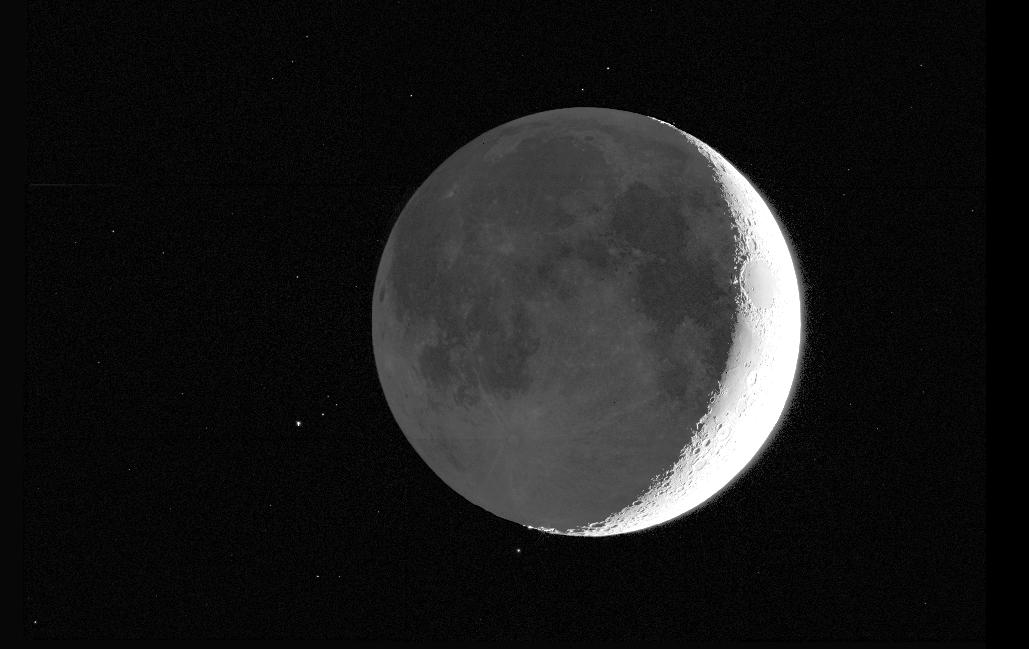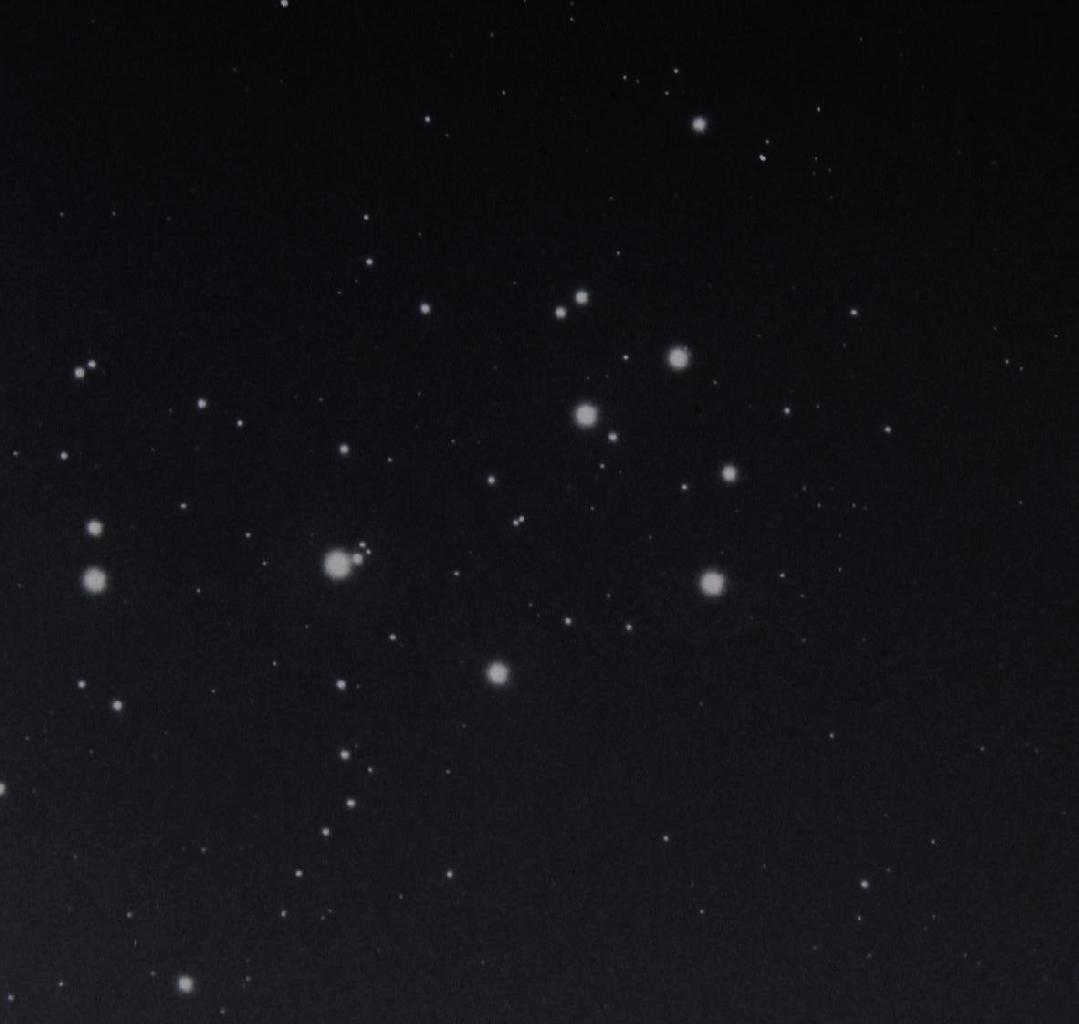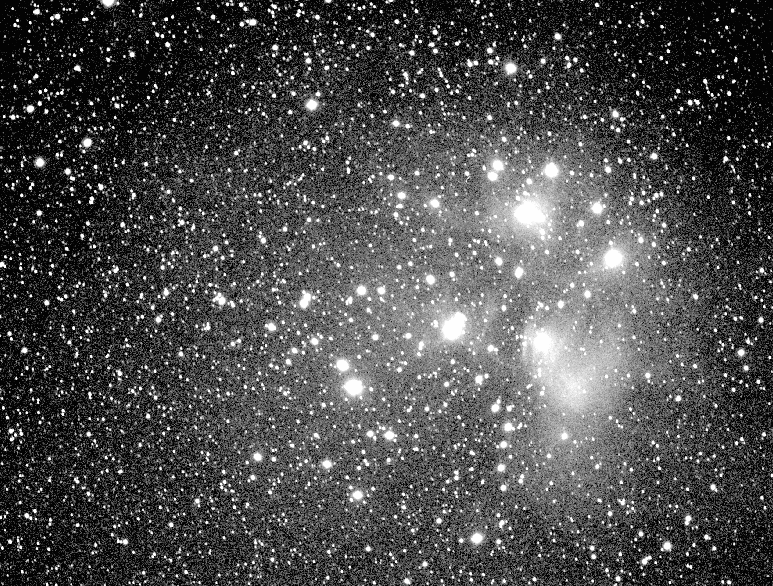

Yes, I know that looks like the moon - but our local neighborhood rock shares the stage with the Pleiades (M45), in Taurus. This image is from a set of 12 CCD exposures taken during the occultation of April 1, 2006, with the 0.4-meter telescope of the University of Alabama Observatory.
This product took enough processing to make it the last object to take its place in my Messier gallery. The ideal was to yield an image which would show at once detail in the sunlit crescent, the Earthlit part of the Moon, and the background stars. To do this, I have reduced the brightness of the crescent and used a logarithmic intensity scale in overall brightness.
For those who are really interested, here are some processing details. I started with a 3x3 set of 5-second exposures, done quickly to capture the "garland" moment when only one bright Pleiad is hidden and the Moon appears encircled by 8 more. An I band filter reduced the sky background, especially since this happened in twilight. At the end, a short exposure matching the final long one was used to register sublit and Earthlit portions, and two short exposures were pieced together for the sunlit crescent. First, all the long exposures were pieced together into a single 6000x8000-pixel mosaic. The purist may note that, since I registered on the moving Moon, this distorts the star pattern somewhat. Then the sunlit crescent was registered. One headache was getting rid of internally scattered light from the bright crescent, which originally made engaging and varying streaks of light across the earthlit regions. In order of preference, I made use of overlapping parts of images at different pointings, symmetry, and a full-Moon image. There were some Earthlit regions completely wiped out by charge-bleeding from adjacent sunlit regions. To patch these for esthetic purposes. I made a 4-frame mosaic of the full moon (Harvest Moon in 2006, in fact), and resampled that to roughly match the state of libration from the occultation by fitting 51 points on both sides of the terminator. This resampled albedo image was pasted in for those areas with no other useful data or very poor scattered-light correction. This was all done using IRAF under Linux. Again, the purist may note the change in noise level at the boundaries between Earthlight and patched full-moon data. However, noting that the data were 16 months old when pisted, I put the image up then, or it might never have seen the web of day...
To see the star cluster unobscured by that rock (here's that psychological obsession with backlighting again...), I'll show an image made from a plate taken by Steve Odewahn over 20 years ago with the 10-inch refractor formerly housed in the UA Observatory. This was part of some experiments with densitometry.

The reflection nebula associated with the cluster (from Doppler shifts, the cluster is only passing through the dust) shows up gratifyingly well in this red-light exposure with the University of Alabama Crimson-Dragon wide-field system, used on top of the campus physics building. I look forward to what it shows when it can be used with a blue filter from a dark site.

Last changes: 9/2018 © 2007-2018